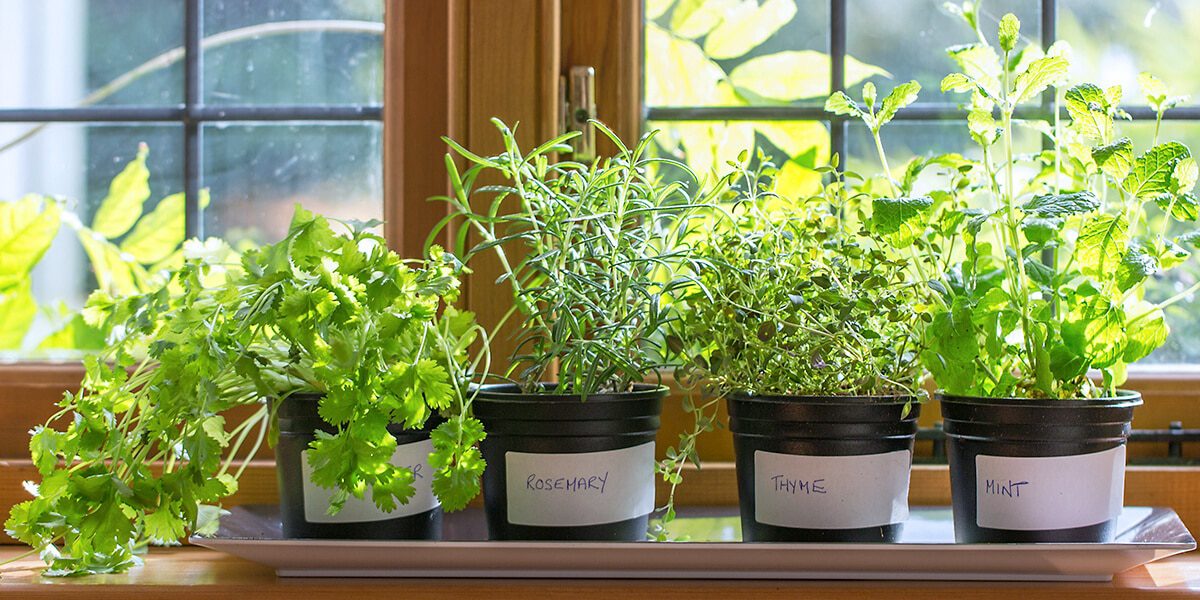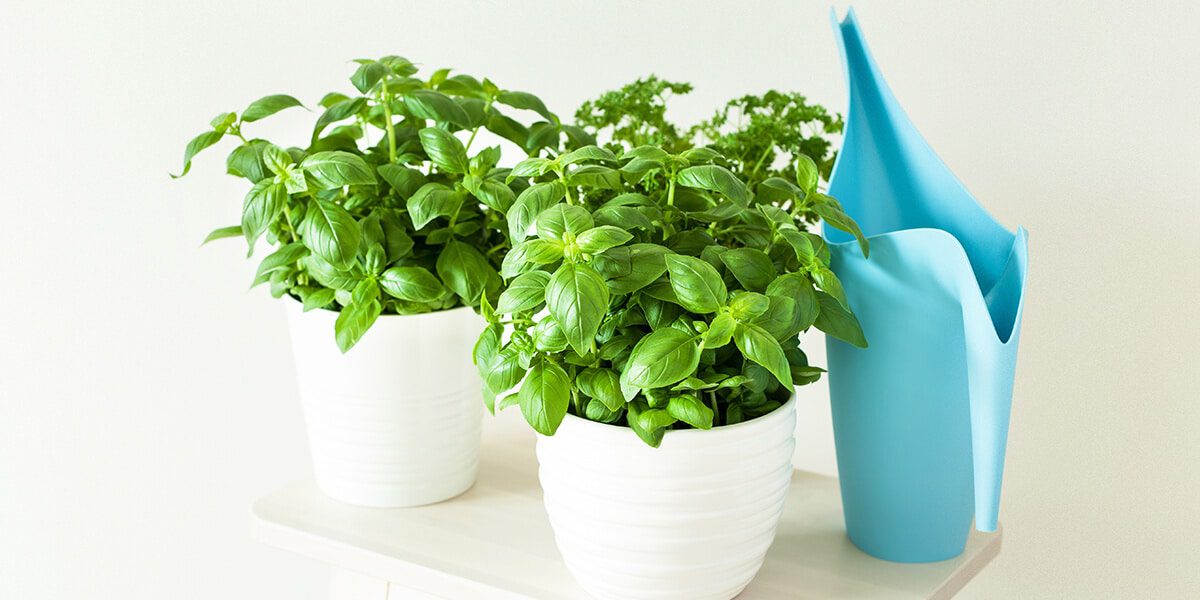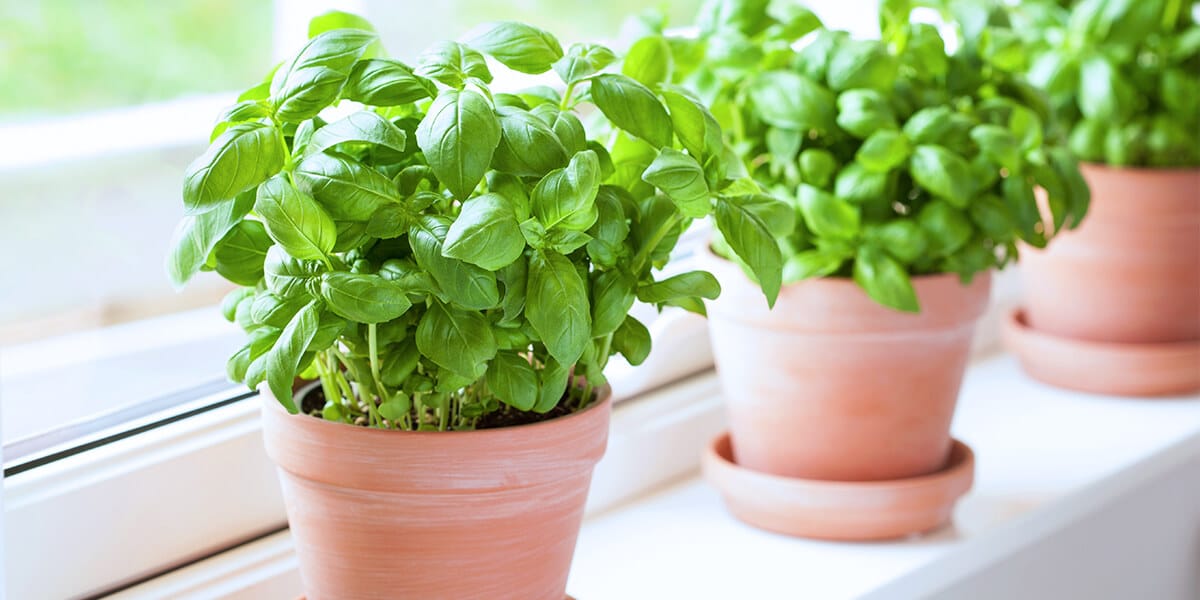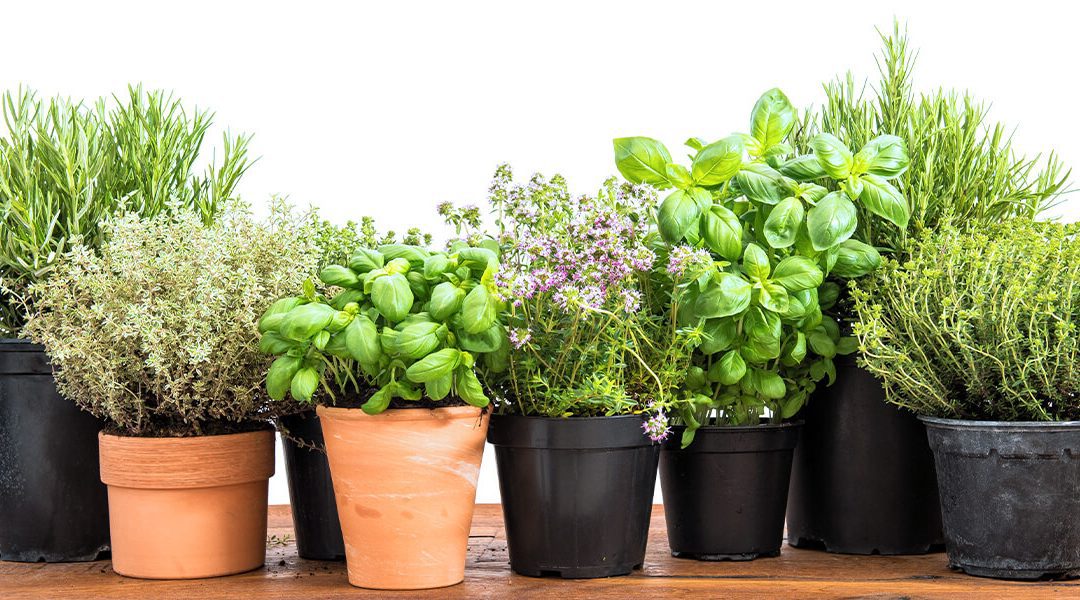You can enjoy fresh herbs year-round, within arms reach of any meal, and you don’t even need a garden. Indoor herbs thrive in any kitchen, as long as you have pots, soil, sunlight, and keep a good watering routine. Here are the details for a DIY herb garden!
Which Herbs Can I Grow Indoors?
You can grow any herb indoors as long as you provide the right conditions. Mediterranean herbs like sage, rosemary, and thyme prefer dry soil and heat. Many other herbs such as cilantro, parsley, and mint enjoy cool, moist conditions. As long as you treat them right, they’ll grow just like in the garden. And why stop there? Basil, chives, oregano, lavender, marjoram, and savory are also on the table!
Light is key to any DIY indoor herb garden. South-facing windows are the best, but not absolutely necessary.

How Much Light Do Herbs Need Indoors?
Light is key to any DIY indoor herb garden. South-facing windows are the best, but not absolutely necessary. Skylights, and well-exposed west, east, and north-facing windows can also give enough sun. As long as you have 4-6 hours, many herbs will be happy. A herb growing kit or DIY grow lights can provide extra rays if you need them.
- Basil, oregano, thyme, rosemary, and sage need 6 to 8 hours of light.
- Mint, parsley, and cilantro tolerate more shade and get by with 4 hours of light.

How to Water Indoor Herbs
Getting to know your herbs’ water needs is another key to the success of your DIY indoor garden and probably the most challenging part of indoor herb care. When you first bring your plants home, it’s a good idea to keep the soil moist for a few days until you see new leaves start to grow. After that, you can check the moisture regularly by sticking your finger one inch into the soil.
- Herbs to keep on the dry side include savory, rosemary, thyme, oregano, and sage. They like the soil to dry out in between waterings.
- Mint, basil, parsley, and lemon balm like the soil to stay moist but not soggy.
Remember that most houseplant struggles are the result of overwatering, so be sure not to overdo it.

Soil & Pots for an Indoor Herb Garden
Indoor herbs do best in well-draining soil and pots with ample drainage holes. Terra cotta pots are one of the best choices for a DIY herb garden. The material naturally absorbs extra moisture, causing it to evaporate and spare the herbs from root rot. Having each herb in the right size of pot also makes maintaining moisture levels easier inside.
Prevent Indoor Herbs from Getting Leggy
Herbs can easily get tall and leggy when you grow them inside. It’s a sign that they need more light. If possible, move them to a sunnier spot. Pinching off the leggy portion is another way to fix the problem. It encourages them to fill out and grow bushier. Rotating the herbs when you water them also keeps them in a more even shape.
How to Harvest Indoor Herbs
It’s good to wait until your indoor herb garden is mature before you start to harvest. Only harvest up to one-third of the plant at each time and wait until it grows back before you cut it again. Harvesting it in the right way can actually improve a herb’s growth. If you remove the leggy parts, the dense parts, and stray leaves, it will grow back healthier and fuller for the next harvest.
Extra DIY Tips
Like your garden plants outside, your herbs need space and airflow around the leaves to prevent fungi and pests. Remember to keep your pots spaced apart, and if you see the leaves getting too dense, it’s time to harvest!
Ready to start a fresh herb garden in your kitchen? Visit our garden centers for all of the plants and DIY supplies you need, plus any more advice on growing herbs inside!
Platt Hill Nursery is Chicago’s premier garden center and nursery.
OTHER RESOURCES:
How to Grow and Blend your Own Herbs at Home
How to Keep Your Herb Garden Healthy


